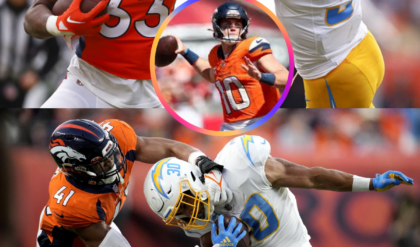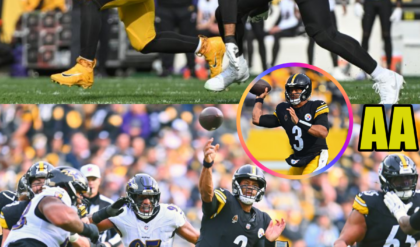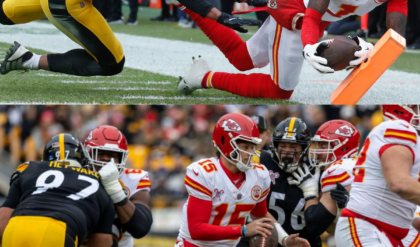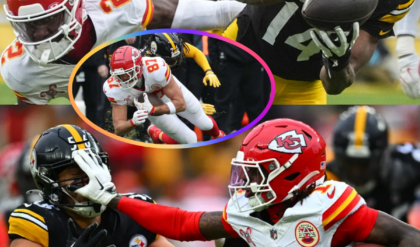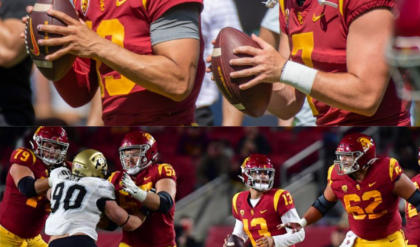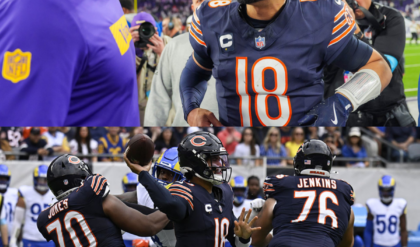The NFL has always been at the forefront of sports broadcasting, constantly looking for new ways to engage fans and enhance the viewing experience. From the high-definition broadcasts of games to interactive pre-game shows, the league has embraced technology to keep its audience captivated. However, the latest developments in virtual reality (VR) and augmented reality (AR) have the potential to change how NFL coverage is shown forever.

The Rise of Virtual Reality and Augmented Reality
Virtual reality and augmented reality have been making waves in various industries, and the world of sports is no exception. For years, we’ve seen VR and AR technology used in training, but now these innovations are moving into the broadcast space. Imagine sitting at home, watching your favorite NFL game, and being able to immerse yourself in the action as if you were standing on the sidelines, looking at plays unfold in real-time, or even getting a quarterback’s perspective on the field.
This shift in broadcasting is no longer just a pipe dream. Recently, VR technology has started to make its way into NFL coverage, giving viewers the chance to experience games in a more interactive and engaging way. VR allows fans to virtually step into the stadium, while AR can enhance traditional broadcasts by overlaying real-time data, player stats, and play analysis on the screen, making it easier than ever for fans to understand what’s happening.
Dan Orlovski and the Future of Football Analysis
One of the key players in this evolving landscape is former NFL quarterback Dan Orlovski. Known for his deep knowledge of the game and his ability to break down film, Orlovski has been at the forefront of using VR to enhance football analysis. Recently, he collaborated with Andrew Hawkins, a former NFL player and entrepreneur, to work on a VR project that is revolutionizing the way football is analyzed and shown on screen.
Orlovski’s ability to use VR to break down complex plays and quarterback decisions is nothing short of impressive. Imagine watching a game, and instead of just hearing commentary, you could see the decisions quarterbacks are making in real-time. Orlovski’s virtual breakdowns can show exactly what a quarterback sees from their perspective, breaking down the field and illustrating their thought process as they navigate defenses and make key decisions. This could transform the way fans watch games, providing them with an immersive, educational, and exciting experience.
The use of VR in football analysis isn’t limited to just the broadcast booth. It could be integrated into sports coverage in new ways, allowing fans to experience the game from different perspectives, interact with the plays, and even make their own decisions on the field through VR simulations. The possibilities are endless, and the technology is advancing rapidly.

The Impact on NFL Coverage
The potential impact of VR and AR on NFL coverage is enormous. With VR, fans could enjoy an immersive experience from home, allowing them to feel like they’re at the game without leaving their couch. In the future, sports networks might offer VR streams of games, where viewers can choose from multiple camera angles, switch between different perspectives, and even engage in interactive features, like controlling the replay.
Additionally, AR can revolutionize the way we consume real-time data. Instead of just seeing the score or player stats, AR could overlay detailed information about the game directly onto the broadcast, providing insights into player performance, coaching strategies, and even in-depth analysis of specific plays. This would give fans a deeper understanding of the game and make it more interactive.
The future of NFL coverage could see a blend of traditional broadcasting and immersive technologies, creating a hybrid experience that caters to all types of fans. Whether you prefer a traditional broadcast or want to dive deeper into the action with VR and AR, the choice could be in your hands.

The Road Ahead: Challenges and Opportunities
While the potential is exciting, there are still challenges to overcome before VR and AR can fully revolutionize NFL coverage. The technology itself is expensive and still developing, meaning that not all fans have access to the tools needed to experience it. Additionally, there are questions about how these technologies will affect traditional broadcasting, including the costs and logistics of integrating them into live games.
Despite these challenges, the opportunities are clear. As VR and AR technology continue to improve, it’s likely that more sports networks will begin to adopt them, offering fans new ways to experience NFL games. In the long term, these technologies could become a staple of sports broadcasting, changing the way we watch, analyze, and enjoy football forever.
Conclusion
Virtual reality and augmented reality have the potential to completely reshape the way we watch NFL games. With innovators like Dan Orlovski leading the charge, the future of NFL coverage could be filled with immersive, interactive experiences that allow fans to step into the game in ways they never thought possible. From VR breakdowns of key plays to AR overlays with real-time stats and analysis, the next evolution in sports broadcasting is on the horizon. While challenges remain, the opportunities are endless, and we’re just beginning to see how these technologies will transform the way we experience the game. This could truly change NFL coverage forever.
